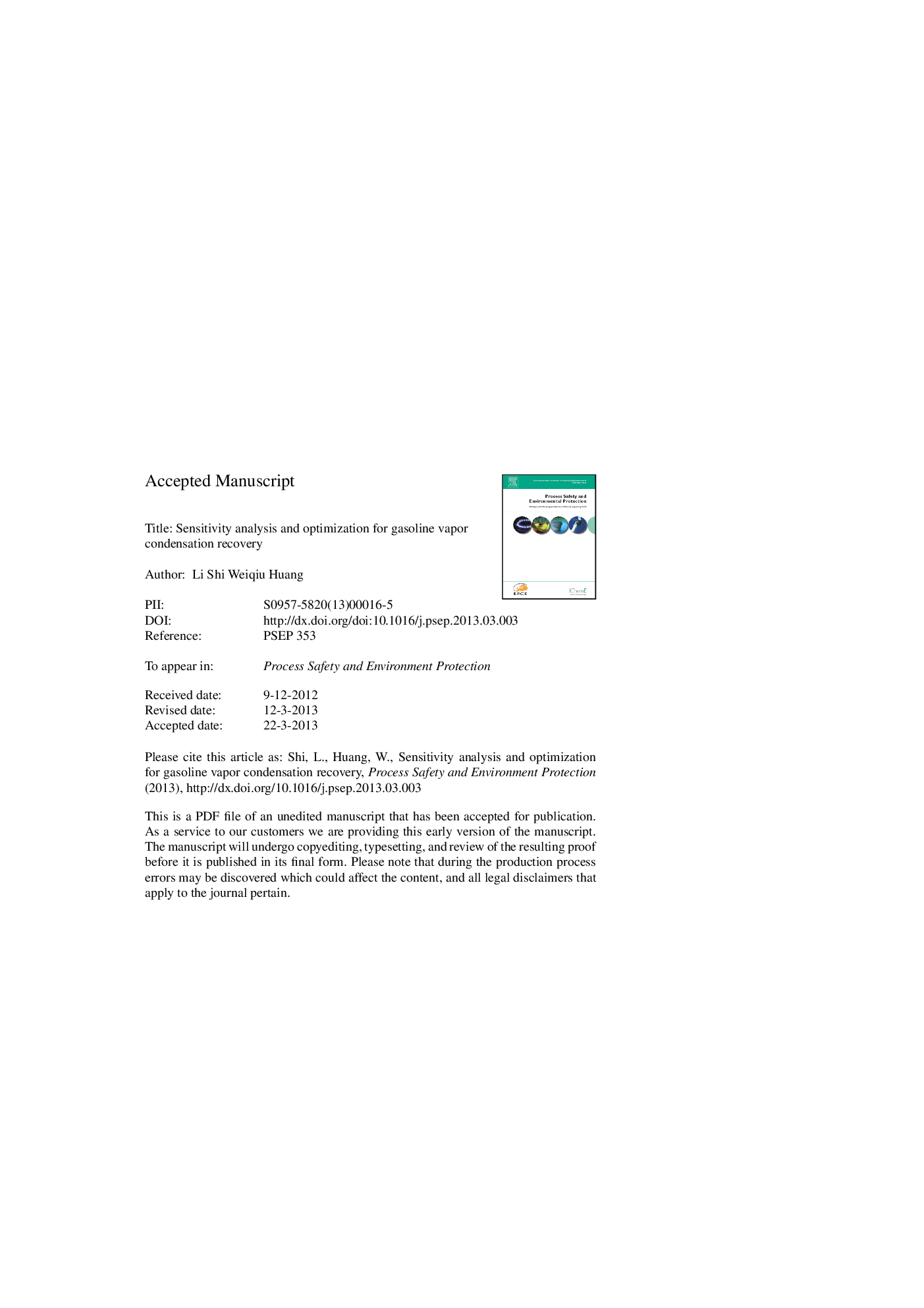| کد مقاله | کد نشریه | سال انتشار | مقاله انگلیسی | نسخه تمام متن |
|---|---|---|---|---|
| 10373925 | 878567 | 2014 | 25 صفحه PDF | دانلود رایگان |
عنوان انگلیسی مقاله ISI
Sensitivity analysis and optimization for gasoline vapor condensation recovery
ترجمه فارسی عنوان
تجزیه و تحلیل حساسیت و بهینه سازی برای بهبود تراکم بخار بنزین
دانلود مقاله + سفارش ترجمه
دانلود مقاله ISI انگلیسی
رایگان برای ایرانیان
کلمات کلیدی
بخار بنزین، چگالش، بهره وری بازیابی بخار، غلظت بخار خروجی، وظیفه خنک کننده،
موضوعات مرتبط
مهندسی و علوم پایه
مهندسی شیمی
بهداشت و امنیت شیمی
چکیده انگلیسی
Volatile organic compounds (VOCs) are easily evaporated and discharged from everywhere into the atmosphere, especially in various operations of gasoline. The emission of VOCs is always a significant environmental problem, and the control of VOCs pollution has been a hot topic in the field of air purification. In this paper, the condensation separation method for gasoline vapor recovery was investigated and four gasoline vapors of S1-S4 were selected for the sensitivity analysis and optimization of the condensation process, using the Model Analysis Tools from Aspen Plus. Generally, to control VOCs pollution efficiently, both the vapor recovery efficiency and the outlet vapor concentration of the condensation recovery system should be simultaneously considered. Then an optimized three-stage condensation process was proposed, whose condensation temperatures were optimized and designed at 1 °C, â40 °C and â110 °C, respectively. Further, based on the comprehensive consideration of both meeting the more strict VOCs emission standard and ensuring the condensation recovery system work stably and economically, it was recommended that the maximum total vapor recovery efficiencies for S1-S4 should be 99.73%, 99.79%, 99.82% and 99.19%, and the minimum outlet vapor concentrations be 2.87 g/m3, 2.75 g/m3, 3.04 g/m3 and 16.98 g/m3, respectively. Accordingly, the condensation temperature of the copious cooling stage should be set at â130 °C. Moreover, the total cooling duties for the single-stage and three-stage condensation processes were investigated and compared when the condensation temperature of the recovery system ranged from 20 °C to â110 °C. The total cooling duties of the three-stage condensation process for S1-S4 would be saved by 12.23%, 15.68%, 13.96% and 15.65%, respectively. Finally, a three-stage condensation system was developed for the industrial gasoline vapor recovery, which has performed well since its installation.
ناشر
Database: Elsevier - ScienceDirect (ساینس دایرکت)
Journal: Process Safety and Environmental Protection - Volume 92, Issue 6, November 2014, Pages 807-814
Journal: Process Safety and Environmental Protection - Volume 92, Issue 6, November 2014, Pages 807-814
نویسندگان
Li Shi, Weiqiu Huang,
